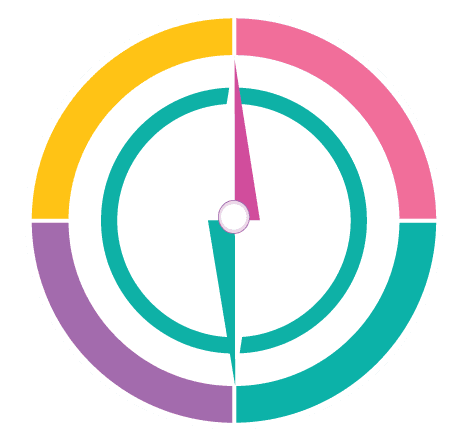In an increasingly interconnected world, progressive educational models such as Self-Directed or Self-Determined Learning, alongside Project-Based, Investigative, and Design Thinking Learning, as well as FBLA (Future Business Leaders of America/Australia), are essential for preparing students to adeptly face the future in a web-connected world.
However, there is a contrast between these learning frameworks and the multifaceted realities of everyday life. The environments these models often use may not fully capture the unpredictability and fluid nature of real-world scenarios.
Therefore, while these models are a good start, there is an ongoing conversation about how they might be adapted or evolved to better reflect the often unstructured challenges encountered beyond the educational sphere. This alignment is crucial in truly equipping learners to be ready not just for the future, but also for reality.
Observe how the Ripples@Work learning model addresses and reforms the key aspects of teaching and learning systems to meet these challenges.
Progressive Leaning Models
Ripples@Work Learning Model
Progressive learning models should include opportunities for active collaboration and communication, skills that are indispensable in a professional setting.
By simulating startup ventures, Ripples@Work creates a training ground that facilitates the development of active collaboration and communication with team members, the outside community, and social media participants.
Self-directed or self-determined approaches imply a lack of learning conditions that promote the development of flexibility, agility, self-readjustment, and environmental sensitivity — attributes that are crucial in the knowledge economy.
By adopting the startup logic of validated learning, R@W assists in cultivating agility and the ability to pivot, reiterate, and readjust, which are essential attributes for success in the knowledge economy.
Feedback is received primarily from teachers, which eliminates the chance to cultivate the independent system of ongoing feedback loops inherent in all living organisms through their interactions with the environment.
The cultivation of individual agency through the development of independent system of feedback loops — action, reflection, and readjustment — is the central operational system of the R@W learning model.
Because the work is primarily carried out by students who are self-directing and self-determining their learning process, these models do not adequately address essential workplace conditions of the knowledge economy such as interdisciplinarity.
R@W promotes interdisciplinary collaboration by encouraging students to engage in group learning with peers who have diverse interests and skills. This approach not only enhances creativity but also mirrors the dynamic interactions found in real-world work environments.
Multimodality, as a rapidly developing tool of production, is mostly overlooked. In today’s knowledge economy, the ability to effectively communicate across multiple modes—visual, verbal, and digital—is crucial, as it enhances the adaptability and creativity required to thrive in diverse and dynamic professional environments.
R@W’s imitation of startup logic is foundational for practicing in multimodal settings. Multimodality is the central mode of communication established in R@W, providing a robust framework for learners to develop the versatile communication skills necessary to navigate and succeed in the modern, interconnected professional landscape.
Although creativity is considered a prerequisite for learning, strategic training in its essential principles and systemic integration into the learning process are commonly absent.
In the R@W learning model, multimodal communication, interdisciplinary collaboration, and DIY creativity are intertwined in every aspect and at every step of the learning process. The cultivation of these aspects is supported by solidly structured teaching methodologies.
The assessment of knowledge or products by teachers, self-assessment, or peer assessment does not align with real-life scenarios, where the output is evaluated by an external audience.
Assessment of learning within R@W is done through social media participants integrated into the R@W website, providing the closest simulation to a real-life marketplace.
FBLA (Future Business Leaders of America/Australia)
Ripples@Work Learning Model
FBLA tends to focus on traditional business skills and knowledge, such as management principles, financial accounting, and business law. This model prepares students for structured roles within established business environments.
R@W emphasizes startup logic, validated learning, and agile methodologies. It prepares students to operate in fast-paced, often unpredictable startup settings where pivoting and rapid innovation are frequent.
Collaboration in FBLA often involves role-specific simulations and competitions that mimic existing business roles and scenarios. While teamwork is encouraged, it usually stays within the confines of traditional business functions.
R@W fosters interdisciplinary collaboration by integrating diverse skills and perspectives from the outset. Students work in teams that mirror real-world startup environments, where cross-disciplinary collaboration is key to innovation.
Problem-solving within FBLA is often scenario-based with a focus on finding the best practices within established business paradigms. Solutions are generally aimed at optimizing existing processes.
R@W encourages creative problem-solving that challenges existing models and seeks to redefine possibilities. This involves strategic tinkering and a ‘bricolage’ approach that is essential in rapidly changing markets.
Assessment in FBLA usually takes the form of tests, competitive events, and project presentations judged against standard business criteria. Feedback is typically structured and formal.
Feedback in R@W is continuous and integrated through a system resembling real-life market feedback loops. Learning is assessed not just by instructors but also by peers and external participants via platforms akin to real market dynamics.
While FBLA provides a solid foundation in business principles, its adaptability to change is often limited by the structured nature of its curriculum.
R@W prioritizes agility and adaptability, essential traits for thriving in the knowledge economy. Students learn to reiterate, adapt, and pivot quickly based on feedback and changing conditions, mimicking the fluid dynamics of startup ecosystems.
Technology use in FBLA supports traditional business practices and is often geared towards improving efficiency in established processes.
In R@W, technology is a core component, utilized not just for efficiency but as a driver of innovation and a tool for creating new business models, reflecting the pervasive role of tech in startups.

